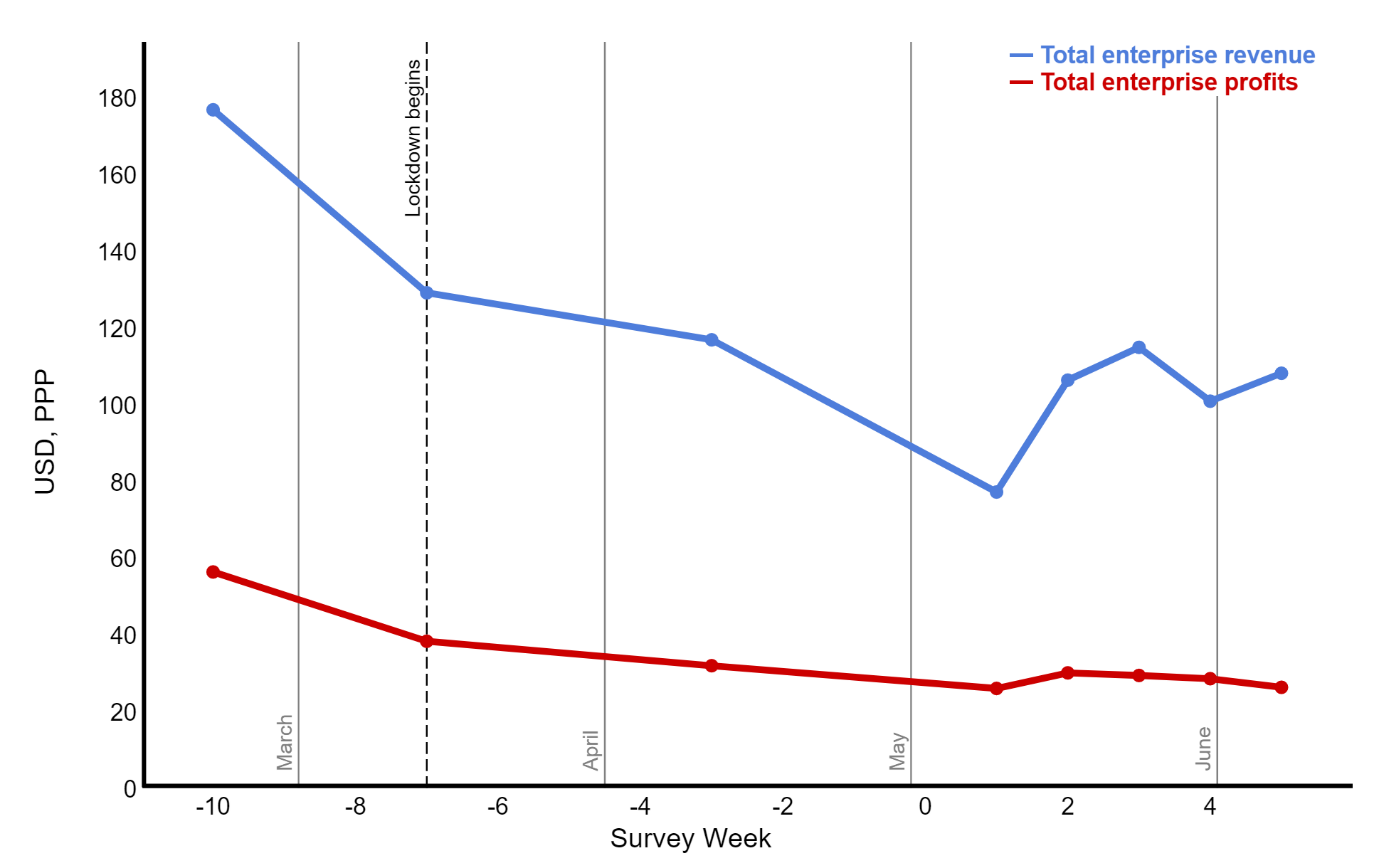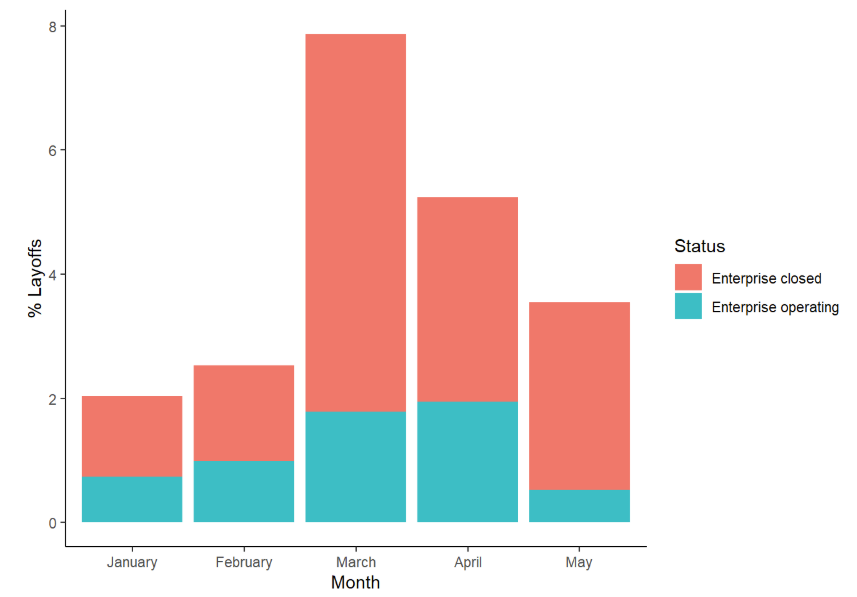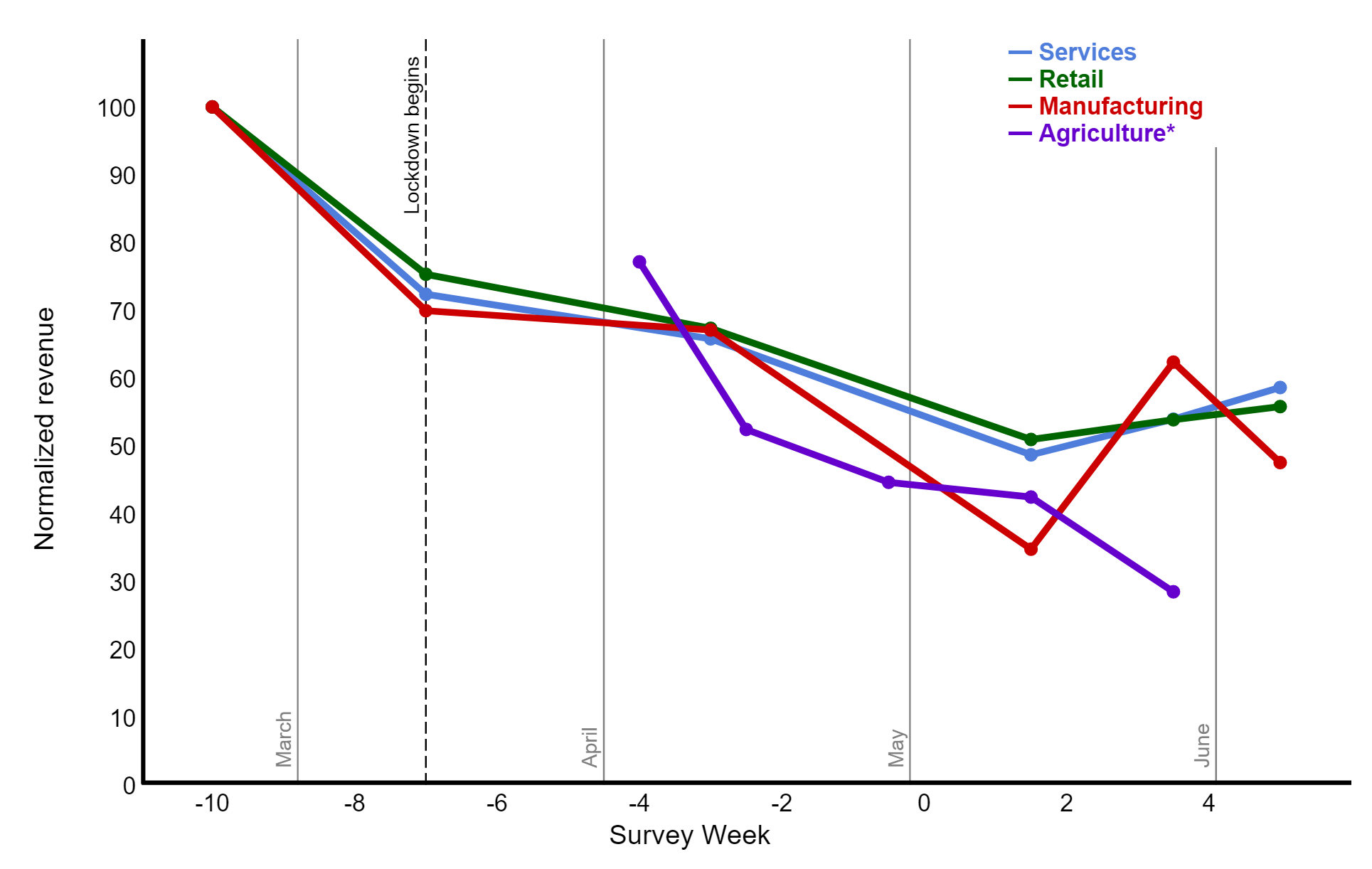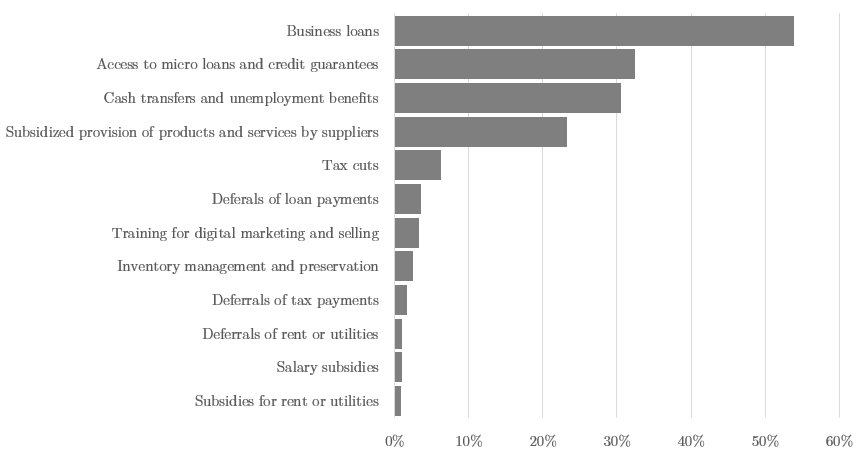Detailed quantitative evidence on the evolution of economic outcomes during the COVID-19 health crisis in low income countries remains scarce. We study the impact of COVID-19 lockdowns using phone surveys from a representative sample of businesses in one of the poorest regions in Kenya, allowing us to study trends over time. Revenues dropped by 55% from February to May 2020, layoffs have doubled, and an increasing number of households are facing food insecurity. Entrepreneurs and our earlier research indicate that cash transfers and business loans may be effective policies for mitigating the negative effects of the downturn.
COVID-19 continues to have negative economic effects around the globe, even as countries have begun to reopen their economies. There is an active debate about appropriate policies for maintaining social distancing in low-income countries, yet there is little data on how these policies affect businesses, markets, and supply chains, and how quickly (and whether) economies can recover. These economic consequences are particularly pertinent in this context because many families already live close to subsistence and governments' limited budgets mean that they cannot provide adequate support to citizens during the crisis.
To shed light on these questions, we are conducting phone surveys with a representative sample of 11,000 households and 5,000 businesses in 653 rural villages in Siaya County, Western Kenya, starting at the onset of the lockdown in early April and continuing through the gradual reopening. In Kenya, schools were closed nationally on 20 March, and President Uhuru Kenyatta announced a national dawn-to-dusk curfew on 27 March. At the same time, weekly markets were shut. A month later, on April 27, the partial reopening of restaurants and eateries marked the beginning of a gradual easing of lockdown policies.
Our detailed data collection allows us to create weekly representative data on economic activity and trace out the effects of the pandemic in our study area overall (an area with a population of 300,000 and 20,000 local businesses).
Figure 1 shows that after Kenya implemented their lockdown policies, local economic activity declined. Enterprise revenues and profits dropped by 55% between February 2020 and the start of May. And, while both have recovered somewhat since the gradual easing of the lockdown, sales remain 40% below their pre-pandemic value.
Falling revenues not only lead to lower incomes for their owners, often poor themselves, but also accelerate job losses (see Figure 2). In a typical pre-pandemic month, 2% of employees are laid off; this number jumps to 8% at the start of the lockdown, and job losses remain at nearly double the rate in May. In an economy dominated by microenterprises, the bulk of layoffs are driven by businesses ceasing operations completely, while downsizing plays an additional but smaller role.
Figure 1: Enterprise revenue and profits during the pandemic

Note: The figure plots average revenue and profit for all enterprises captured in the 2019 enterprise census. Revenue and profit for closed businesses are set to zero. Data from May onwards is for the last 14 days before the enterprise was surveyed by phone. Data for February, March and April is retrospective for a typical two-week period in that month.
Figure 2: Layoffs and Business closures

Note: The figure plots the share of employees (relative to the number of employees at baseline) that was laid off in each month. Layoffs refer to losing one’s job involuntarily.
These effects are fairly similar across economic sectors (see Figure 3). There is a hint that recovery has begun in non-agricultural sectors, while agriculture remains depressed (though some of this may be due to flooding that has also occurred over this period, or to seasonal factors). Over the same period, the number of days children skip meals has nearly doubled.
Figure 3: Enterprise revenue by sector

Note: The figure plots average revenue and profit for a representative sample of enterprises captured in the 2019 enterprise census, as well as all agricultural farm enterprises run by households captured through household phone surveys. Revenue for closed businesses is set to zero. Data from May (April for agriculture) onwards is for the last 14 days before the enterprise was surveyed by phone. Data for February, March and April is retrospective. For non-agricultural enterprises, revenues are normalized by the February baseline value. For agriculture, numbers are relative to retrospective revenue over the same two-week period last year to account for potential seasonality.
At this point, it is too early to say whether the tentative beginnings of a recovery will continue. As the pandemic gains traction in Kenya – confirmed cases doubled in the last two weeks* – it will be important to monitor the situation going forward, and to continue encouraging public health measures (such as wearing masks, washing hands, and working from home when possible) that result in more limited economic disruptions. Will the recovery accelerate, or remain sluggish? Will additional social distancing measures exacerbate the economic crisis that is already unfolding? And, what can policy makers do about it?
When asked what policies would help them most at this time, entrepreneurs in our study area most frequently mention business- and micro-loans, as well as cash transfers (see Figure 4). Moreover, our earlier research shows that cash transfers to households indirectly benefit enterprises as well by boosting revenues in the economy as a whole (Egger et al. 2019). Given limited budgets of local governments, some of these policies may need to be financed from international sources, despite the global economic slowdown.
Figure 4: Entrepreneurs’ policy priorities

Note: This figure plots the frequency of responses among enterprises surveyed to the question ’In your view, what types of government or external assistance policies will benefit your business the most during the COVID-19 crisis?‘ Respondents were asked to choose up to three of the options.
Faced with difficult tradeoffs going forward, access to both economic and health data will be vital to informed decision making. To help address this need, we aim to continue our phone survey activity over the coming weeks, and make real-time data available to policymakers and the public on www.kenyacovidtracker.org.
This note is based on research conducted as a part of PEDL projects MRG 3847 and MRG 6251.
* Correct as of 30 June 2020







